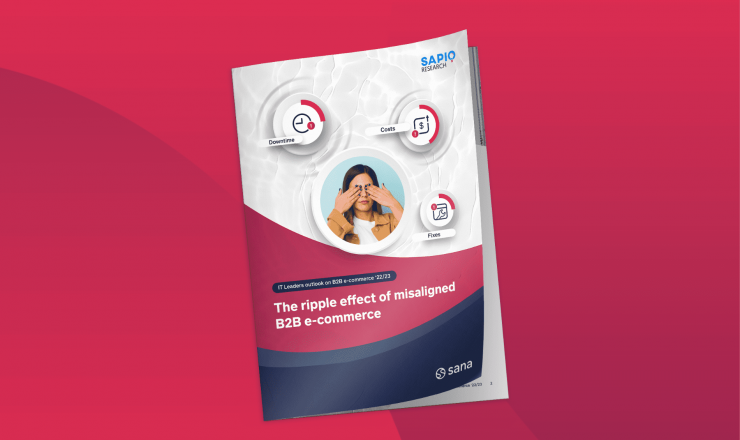

In the world of e-commerce, internationalization has become a global buzzword. But what does it mean? Business internationalization is the process of expanding your footprint beyond your company’s country of origin, by branching out internationally.
So, you’re trying to replicate your successful formula to countries beyond your business’s domestic market… Here’s why that intention is already a great start:
According to a study by Pitney Bowes, around 65% of consumers purchase products online from outside their own country. So e-commerce internationalization has never been more important, and it is a big opportunity.
But just applying the same approach you take in your domestic market to other markets won’t cut it. Here are 3 things to consider if you want to move your e-commerce business overseas.
1. Localize your e-commerce internationalization strategy
To ensure your e-commerce internationalization is a success, you need a localized strategy for each country your business is moving to. What exactly do you need to consider to create a well-rounded localized strategy?
Consider your business goals
Before you even start creating a strategy, it’s important to establish what you want to accomplish. Do you want your company culture to remain the same or to adjust it to the local market? Building a brand name for your company in the country you’re expanding to is crucial to your success.
Create a localized website/web store
55% of consumers say that having information available in their native language is more important than the price. In other words, if your clients are willing to pay more for localized content, you should be too.
So, be sure to translate your e-commerce site content and create a new website domain for the country your company is going to. Of course, there’s much more to it than just translating your site content. For example, you need to make sure your corporate terminology can be standardized to create a consistent corporate image.
Be aware that if you use a translating agency, they will likely translate word for word. For search engine optimization (SEO) keyword purposes, this might not be optimal. As keywords differ from country to country, even in countries that speak the same language. Like for example, important keywords in the United States (U.S.) might not work in Canada.
Do your research. Because even though Google is the most popular search engine in the world, some countries like China, Russia, and South Korea prefer other search engines.
Hire a local marketing team
This is needed to understand the new market’s language, culture, and preferences. Hiring a local team can be especially helpful when translating your website/web store, as an agency might not understand your products/services well enough to translate your e-commerce content. If you have a local team that speaks the language and understands your products/services, they can check the translations, ensuring these are accurate, on-brand and relevant to the local market. Do you have a large product assortment and an active marketing department? Then consider hiring some in-house translators or localization specialists.
2. Have accurate and immediate sales tax calculation
Tax is complicated enough, and when expanding to a new market it can become even more so. Of course, this is no reason to let the opportunity of e-commerce internationalization pass you by. Here’s what you should know about local taxes when selling worldwide:
Taxes in the U.S.
If you’re selling to the U.S., your company will have to deal with indirect taxes on a state and local level. You’ll need to know where to register on a state-by-state basis, sometimes it’s even necessary for companies to register with counties and cities. Local laws vary, this includes what gets taxed, how much tax is applied, and how to file a return and pay the tax.
Taxes in Europe
When it comes to selling in European countries, the challenges are knowing where to value-added tax (VAT) register and dealing with the bureaucracy of the registrations. To know where your company needs to register you need to track the VAT registration thresholds, which differs per country.
Taxes in Australia
Key taxes that affect companies in Australia are income tax, capital gains tax (CGT), and the goods and services tax (GST). These taxes are all set by the Australian Government. For larger companies, the tax rate for the 2019 financial year is 30% and 27.5% for small businesses. The GST is a broad-based 10% tax on most goods, services and other items sold or consumed in Australia. GST also applies to most imported goods. The export of goods and services are typically GST free.
To find out more about sales tax for e-commerce and how to stay compliant, read our blog interview with experts at Avalara, a Sana Commerce partner specialized in indirect tax solutions.
Tax compliance through ERP-integrated e-commerce
Your ERP system stores your sales tax and VAT calculations. Connecting your ERP to your web store will make it easier for your business to automatically and accurately project this ERP data into your web store. This will ensure your web store always displays the right sales tax amount in real-time.
Find out more about real-time sales tax calculations through ERP-integrated e-commerce
3. Get a scalable e-commerce solution
Your e-commerce solution should grow together with your business, keeping up with the demand. Having a scalable e-commerce solution is key to your business’s internationalization.
For example, Sana Commerce’s ERP-integrated e-commerce software provides you with the freedom to scale your business, with native support for all business models and multiple brands (including multilanguage and multicurrency support). Discover the 40+ benefits of ERP integration.
Additional tips for e-commerce internationalization success
Let your ERP do the heavy lifting: Your ERP should be able to take care of a lot of the e-commerce internationalization details for you. Some of the ways your ERP can do this for you is by offering different language settings and support for local rules, regulations, and taxation. Your ERP is your starting point, so make sure you have a strong foundation.
Talk to your ERP provider and have them outline all their e-commerce internationalization features for you. Or, if you know early on that you have international ambitions, be sure to choose an ERP that will support your company’s globalization.
Choose the right platform for e-commerce internationalization: An ERP-integrated e-commerce platform functions from within your ERP, and therefore will allow you to easily use all the localization features you already have in your ERP directly in your web store. If you indicate in your ERP that a client is from Spain, for instance, then an integrated web store will automatically display the Spanish web store when the client logs in. You also want to be sure to choose a web store option that supplies language packs for your web store interface. Click here to see what aspects of Sana Commerce’s solution make going global simple.



